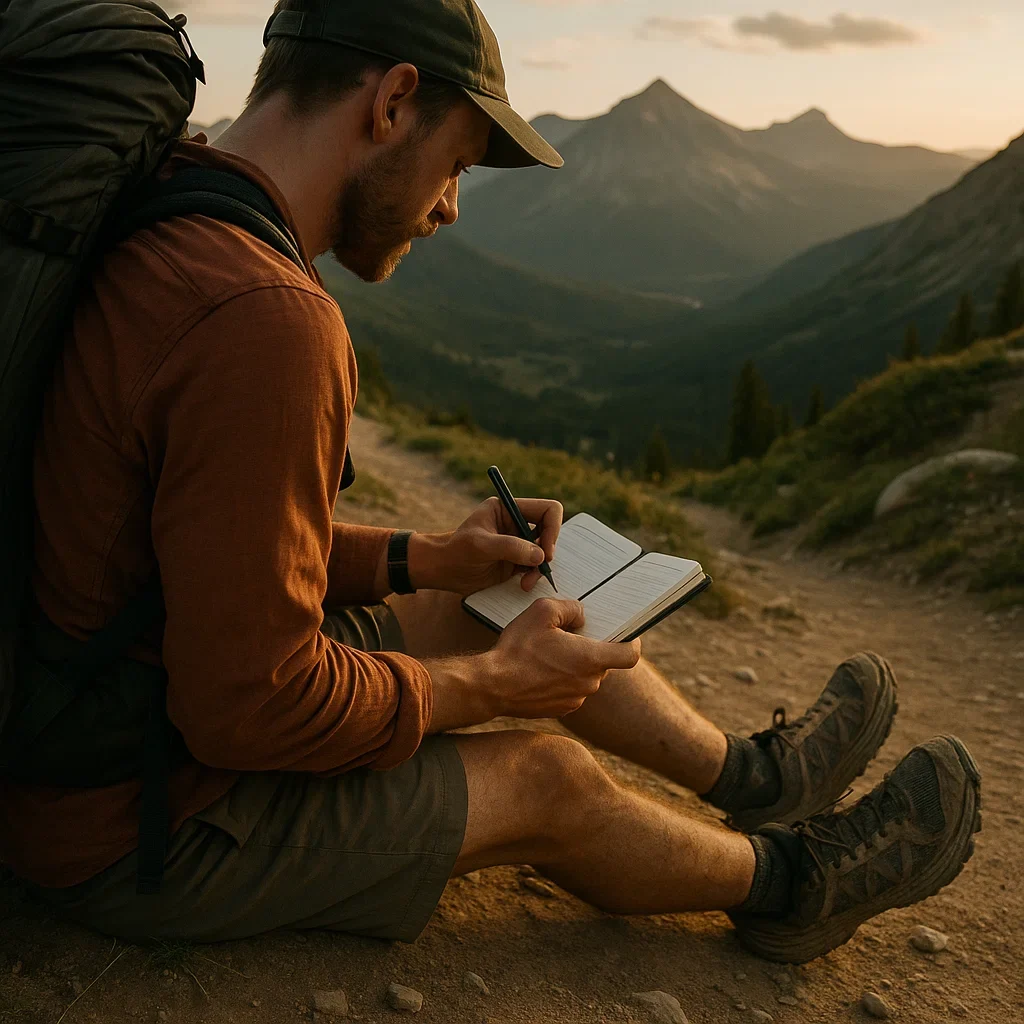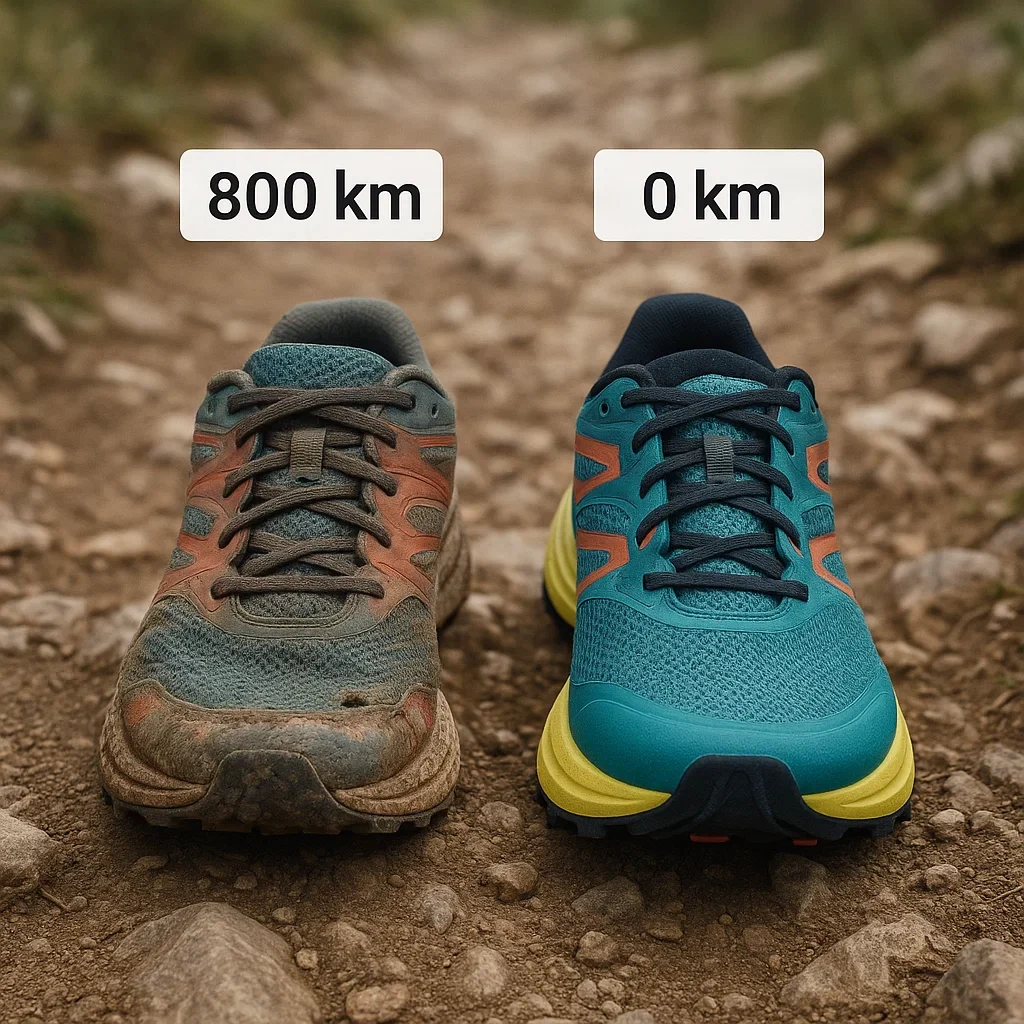Planning a multi-day trek or hoping your trail shoes will last through an entire season? The durability of your footwear can make or break a long-distance hike. In this guide, we’ll compare the durability of top trail running shoes, share expert tips to make them last, and show you real-world stories from hikers who push their shoes to the limit.
Want more hiking shoe advice? Explore the Best Trail Running Shoes for Hiking main guide.
🔍 How Durable Are Trail Running Shoes, Really?
For most hikers, trail running shoes last 500–900 km (300–560 miles). With ideal conditions and careful use, some models can cross the 1,200 km mark, while others might “die” as early as 400 km—especially ultralight racers or shoes with softer foams.
- Average use: 1–2 seasons of steady hiking, depending on mileage.
- Comparison: Traditional boots may last up to 2,000 km, but are much heavier and take longer to break in.
Thru-hiker tip: Many Appalachian Trail and Camino veterans plan for at least two pairs for a full thru-hike.
🧪 What Factors Affect Durability Most?
- Terrain: Rocky and technical terrain wears down soles and uppers much faster than soft dirt or grass trails.
- Hiker weight & pack load: Heavier hikers or big backpacks compress midsoles and foam faster.
- Gait: If you land heavily on your heels or have strong pronation/supination, specific parts may fail early.
- Weather: Repeated soaking and drying, mud, heat, or sun exposure degrade glues, fabrics, and foam.
- Shoe build: Quality of outsole rubber, upper reinforcements, and toe protection all play a role.
Outsole and midsole often “go” before the upper tears—look for compressed, flat foam and worn treads.
🏆 Most Durable Trail Running Shoes: 2025 Picks
| Model | Avg Lifespan | Best Terrain | Known Weakness |
|---|---|---|---|
| Salomon XA Pro 3D v9 | 900–1,200 km | Mixed, rocky, technical | Upper can get hot in summer |
| Brooks Cascadia 17 | 800–1,100 km | All-round, muddy to dry | Rare toe cap delamination |
| Hoka Challenger ATR 7 | 700–950 km | Soft dirt, gravel, long miles | Upper mesh abrasion (rocks) |
| La Sportiva Ultra Raptor II | 900–1,300 km | Mountains, alpine, tough trails | Heavy, less cushioned |
| Altra Lone Peak 8 | 650–900 km | Wide, varied terrain, dry trails | Outsole wears fast on asphalt |
- Salomon XA Pro 3D v9: Known for legendary durability—ideal for technical, rocky, or wet routes. Many users report well over 1,000 km without major breakdowns.
- La Sportiva Ultra Raptor II: “Tank” construction, built for mountain abuse—excellent outsole and upper, but heavier than most.
- Altra Lone Peak 8: Perfect for long, varied hikes and wide feet. Not as durable on rocky or paved surfaces.
🧼 How to Make Your Shoes Last Longer
- Brush off mud/dirt after every hike—don’t let it cake on.
- Rinse shoes with fresh water if exposed to salt or lots of mud.
- Remove insoles and air dry at room temperature (no direct heat!) after each long or wet hike.
- Rotate between two pairs if possible—allows foam to rebound and dry fully between hikes.
- Patch small holes/tears early with shoe glue or repair tape.
- Add lightweight gaiters to keep pebbles and sand out (prevents abrasion inside the shoe).
Long-distance hiker trick: Consider new insoles halfway through a thru-hike to restore comfort and prolong the life of your shoes.
⏰ Signs It’s Time to Replace Your Shoes
- Outsole is bald or lugs are mostly worn away
- Midsole feels “flat,” offers little bounce or cushioning
- Notice new joint pain or sore feet after familiar hikes
- Major rips/holes in upper or the sole is peeling away
- Shoes no longer fit as securely—heel slippage or stretched fabric
🗣️ Real-World Experiences
“My Brooks Cascadia survived the entire Lycian Way (540km) and were still fine for weekend hikes after. I always rinsed and dried them—never saw any blowouts!”
– Barış, Antalya
“I pushed my Hoka Challengers to 900km but the foam felt dead at the end. Rotating two pairs definitely helped—plus, I taped up one small tear to get extra life.”
– Zeynep, Muğla
“The Ultra Raptors are tanks. Did the Kaçkar traverse and then 400km in the Alps—finally had to retire them when the toe bumper peeled.”
– Cem, Trabzon
❓ Frequently Asked Questions
🥾 How many kilometers do most trail running shoes last?
⏳ Do heavier hikers wear out shoes faster?
💦 How should I dry wet trail shoes?
⚡ Are expensive trail shoes more durable?
🔧 Can I repair my shoes if they start to fail?
🦶 Are some brands more durable than others?
🧽 How do I clean my trail shoes after a muddy hike?
👣 Can I use trail shoes for city walking to “extend” their life?
🛒 How do I know when to buy a new pair?
🏔️ Are heavier shoes always more durable?
📚 Further Reading
- REI: How Long Do Shoes Last? – Key signs and tips from outdoor experts.
- OutdoorGearLab: Best Trail Running Shoes – Durability comparisons and reviews.
- The Trek: Thru-Hiker Shoe Replacement Guide – Real-world stories from long trail hikers.
Final Thoughts
No trail shoe lasts forever—but with the right pick and a bit of care, you’ll get every mile possible from your gear. Don’t be afraid to retire worn-out shoes: fresh, supportive footwear is an investment in your feet, health, and every adventure to come.


About the Author
Lost Pace is an ultramarathon runner, shoe-tester and the founder of umit.net. Based year-round in Türkiye’s rugged Kaçkar Mountains, he has logged 10,000 + km of technical trail running and completed multiple 50 K–100 K ultras.
Blending mountain grit with data, Lost analyses power (CP 300 W), HRV and nutrition to craft evidence-backed training plans. He has co-written 260 + long-form guides on footwear science, recovery and endurance nutrition, and is a regular beta-tester of AI-driven coaching tools.
When he isn’t chasing PRs or testing midsoles, you’ll find him sharing peer-reviewed research in plain English to help runners train smarter, stay healthier and finish stronger.
Ultrarunner · Data geek · Vegan athlete

